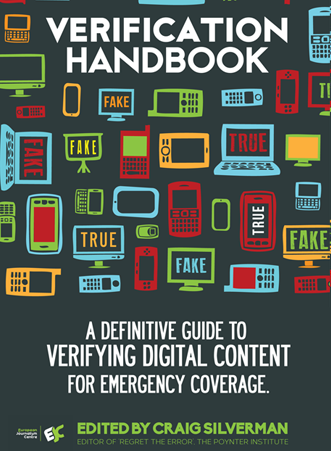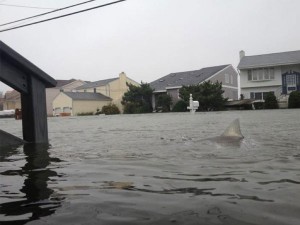Must Read – the Verification Handbook

Social media networks are valuable sources of information but not everything that is posted, tweeted and uploaded is true. And under the pressure of breaking news, many journalists struggle to find ways of verifying the authenticity of pictures and videos on the Internet or establishing the credibility of those posting information. Luckily, help is at hand with the excellent (and free) Verification Handbook, published by the European Journalism Centre and available online.
Written by reporters and human rights researchers from leading organizations such as BBC, Storyful and Amnesty International, the Verification Handbook is jam-packed with practical information, tools and case studies. The handbook drives home why journalists need to be diligent about verifying user-generated content and also provides plenty of pointers on how news reporters can do this for themselves.
The Verification Handbook is targeted primarily at news journalists and others who cover emergencies or disasters (because humanitarian or emergency workers also need to carefully check information). After all, putting out accurate information or debunking rumors can mean life or death in emergency situations.
But many sections of the handbook are a ‘must read’ for any journalist using social media to source information – and really, that’s most of us.
“There was so much false information and rumors circulating on social media during the earthquake in Japan or during Hurricane Sandy, like the photo lifted from the movie The Day After Tomorrow,” said project manager Rina Tsubaki from the European Journalism Centre.
“We thought there was a real need for something like this.”
The handbook, which is split into ten short chapters, is particularly easy-to-read with abundant pictures and images illustrating the points in question.
Several of the chapters discuss aspects of digital verification such as “Verifying User-Generated Content”, “Verifying Images” and “Verifying Video”. There are also chapters on how to use the crowd to help finding out information and how to prepare for the coverage of disasters.
Something I found particularly useful were the case studies accompanying each section. Malachy Browne from the social media news agency Storyful, for example, gives a blow by blow description of how they verified the authenticity a video of the Boston marathon bombing (it turned out the video was shot by an athlete approaching the finishing line as the bomb went off).
The case study also shows the necessity of being absolutely confident in using the verification tools before news actually starts breaking – Storyful confirmed the video was authentic in 10 minutes flat.

This photo proved to be a photoshop fake
In another case study, Tom Phillips from BuzzFeed UK writes about what tools he used to debunk the authenticity of photos of sharks allegedly swimming up a New Jersey street during Hurricane Sandy.
“We wanted to showcase the real life examples of how people are dealing with these kinds of situations,” Tsubaki said about the case studies.
Because video is particularly difficult to verify, the handbook includes three case studies in this section – two from Storyful and one from Amnesty.
The final chapter has a great list of tools for verifying places, verifying identity and verifying images.
What really comes through over and over again in the handbook, though, is the need for journalists continue to think like – well, journalists. Even though the content is being created by someone else, you still have to establish who the person is, where they are, why they are there, and what their motives were for posting something.
The Verification Handbook is available online as well as downloadable as a pdf, ePub or Kindle version.
It is currently available in English. According to Tsubaki, Arabic and Ukrainian versions will be published within the next few months and Portuguese and Japanese versions are also to follow.



